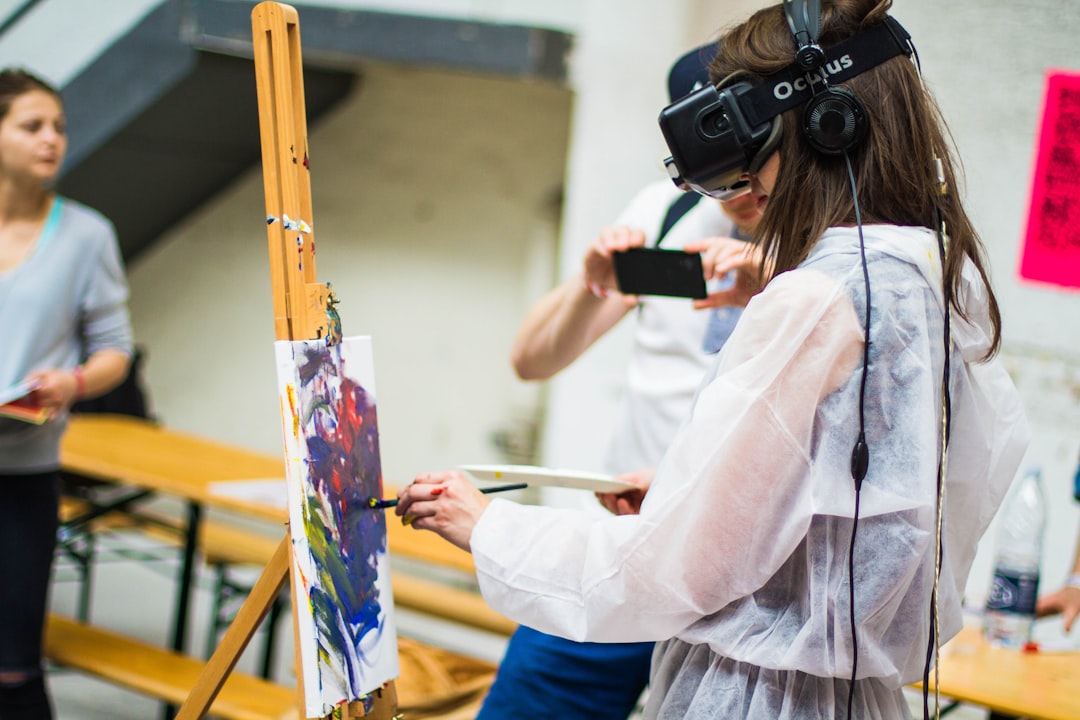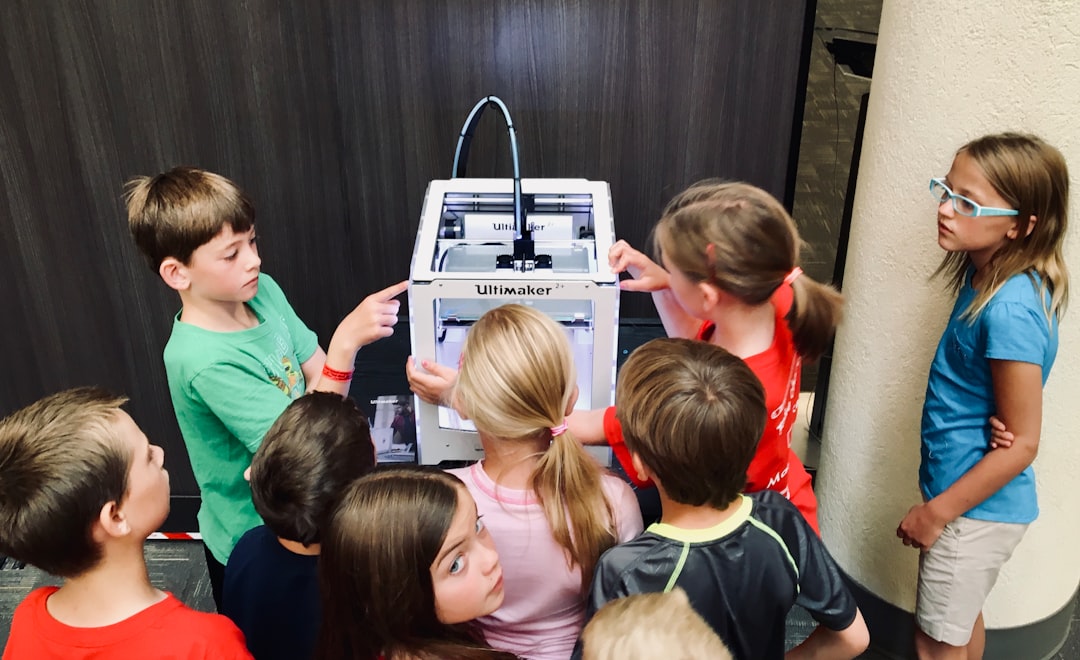As technology continues to advance, Artificial Intelligence (AI) is becoming increasingly prevalent in various industries. One of the areas that AI is making a significant impact is in education. From automating administrative tasks to providing personalized learning, AI is transforming the way we approach education.
The use of AI in education is not a new concept. However, with advancements in technology, the potential for AI to revolutionize the education sector is greater than ever before. AI has the ability to analyze vast amounts of data, identify patterns, and make predictions. This makes it an incredibly valuable tool for educators and administrators alike.
The rise of AI in education is not without its challenges. As with any new technology, there are concerns about its impact on students, teachers, and the education system as a whole. However, if implemented correctly, AI has the potential to improve educational outcomes and make education more accessible to all.
In this blog post, we will explore the various ways in which AI is being used in education. From automating administrative tasks to providing personalized learning, we will examine the potential benefits of AI in education. We will also address some of the ethical considerations surrounding the use of AI in education and discuss the importance of embracing the potential of AI for a better future.
Automating Administrative Tasks: The Role of AI in School Management
As technology advances, schools are finding new ways to streamline their administrative tasks. From managing student records to scheduling classes, there are countless tasks that can be automated with the help of artificial intelligence (AI).
One of the most significant benefits of using AI in school management is the reduction of human error. With AI, data can be processed quickly and accurately, reducing the risk of mistakes. This also frees up time for staff members, who no longer have to spend hours manually inputting data or tracking down missing information.
AI can also help schools make better decisions by providing insights into student performance and behavior. For example, AI-powered systems can analyze data from student assessments to identify trends and patterns, allowing teachers to adjust their teaching methods to better meet the needs of their students. Additionally, AI can help schools identify at-risk students and provide targeted interventions to help them succeed.
Another area where AI can be particularly useful is in managing school resources. By analyzing data on student attendance, class sizes, and other factors, AI can help schools optimize their schedules and allocate resources more efficiently. This can help schools save money and reduce waste, while also improving the quality of education for students.
Of course, there are also some potential drawbacks to using AI in school management. For example, there are concerns about privacy and security, as well as worries about the potential for bias in AI algorithms. These are important issues that need to be addressed as schools begin to incorporate AI into their operations.
Overall, however, the benefits of using AI in school management are clear. By automating administrative tasks, providing insights into student performance, and optimizing resource allocation, AI has the potential to revolutionize the way schools operate. As educators and administrators continue to explore the possibilities of AI, it is important to remain mindful of the potential risks and work to mitigate them.
This also frees up time for staff members, who no longer have to spend hours manually inputting data or tracking down missing information.
Personalized Learning: How AI Can Adapt to Students’ Needs
As educators, our ultimate goal is to provide the best possible learning experience for our students. One way to achieve this is through personalized learning, which tailors the curriculum and pace of learning to each student’s individual needs and abilities. However, this can be a daunting task for teachers when faced with a classroom full of diverse learners.
This is where AI can play a crucial role. With its ability to collect and analyze large amounts of data, AI can provide insights into each student’s learning style, strengths, and weaknesses. This information can then be used to create personalized learning plans that cater to each student’s unique needs.
For example, AI-powered adaptive learning platforms can adjust the difficulty level of questions based on a student’s performance, ensuring that they are always challenged but not overwhelmed. These platforms can also provide instant feedback and support, guiding students through difficult concepts and helping them to identify areas where they need to improve.
AI can also help to identify students who are at risk of falling behind, allowing teachers to intervene early and provide additional support. By analyzing data on student performance and engagement, AI can flag students who may be struggling or disengaged, giving teachers the opportunity to offer extra help or adjust their teaching approach.
Of course, there are concerns about the use of AI in personalized learning. Some worry that it could lead to a one-size-fits-all approach that fails to account for the unique needs and abilities of each student. Others worry about the potential for bias or discrimination, as algorithms may inadvertently perpetuate existing inequalities.
However, these concerns can be addressed through careful design and implementation. AI-powered personalized learning should be developed in consultation with educators and students, taking into account their specific needs and concerns. It should also be subject to rigorous testing and evaluation to ensure that it is effective, fair, and transparent.
AI has the potential to revolutionize personalized learning, providing teachers with powerful tools to meet the diverse needs of their students. By leveraging the power of data and machine learning, we can create a more effective and equitable education system that helps all students to reach their full potential.
One way to achieve this is through personalized learning, which tailors the curriculum and pace of learning to each student’s individual needs and abilities.
Virtual Tutors: AI-Powered Assistance for Teachers and Students
As we continue to explore the role of AI in education, it is important to consider how it can assist both teachers and students in the learning process. One way in which AI can provide assistance is through virtual tutors, which are essentially AI-powered teaching assistants that can provide personalized support to students.
Virtual tutors can take on a variety of forms, from chatbots that can answer students’ questions to more advanced systems that can provide feedback on assignments and track students’ progress. One example of a virtual tutor is Carnegie Learning’s Mika, which uses AI to adapt to students’ learning styles and provide tailored feedback and support.
The benefits of virtual tutors are numerous. For students, they can provide personalized support that is tailored to their individual needs, which can help them to better understand and retain the material they are learning. For teachers, virtual tutors can help to alleviate some of the workload associated with providing individualized support to students, allowing them to focus on other important aspects of teaching.
However, it is important to note that virtual tutors are not a replacement for human teachers. While they can provide valuable support, they cannot replace the human connection and empathy that is essential to effective teaching. Additionally, there are concerns about the potential for virtual tutors to perpetuate existing biases and inequalities in the education system.
Overall, virtual tutors are a promising application of AI in education that can provide valuable support to both teachers and students. As we continue to develop and refine these systems, it will be important to ensure that they are used in a way that is ethical and equitable, and that they complement rather than replace human teachers.
Virtual tutors can take on a variety of forms, from chatbots that can answer students’ questions to more advanced systems that can provide feedback on assignments and track students’ progress.
Analyzing Data: AI as a Tool for Student Performance Assessment
As educators, one of the most crucial tasks we undertake is assessing the performance of our students. Traditionally, this has been done through tests, quizzes, and assignments. However, with the rise of AI in education, we now have access to advanced tools that can help us analyze student performance data in new and exciting ways.
AI-powered assessment tools can help us identify patterns and trends in student performance, allowing us to tailor our teaching strategies to better meet the needs of individual students. For example, if we notice that a particular student is struggling with a specific concept, we can use AI to recommend additional resources or provide targeted feedback to help them improve.
Furthermore, AI can help us identify gaps in our curriculum or teaching methods. By analyzing student performance data, we can identify areas where students are consistently struggling and adjust our teaching strategies accordingly. This can help us create more effective and engaging lessons, leading to better overall student performance.
Of course, it’s important to note that AI is not a perfect solution. There are limitations to what it can do, and we must be careful not to rely too heavily on technology at the expense of human interaction and intuition. Additionally, we must ensure that any data we collect and analyze is done so ethically and with student privacy in mind.
Despite these considerations, the potential benefits of AI-powered assessment tools are undeniable. By harnessing the power of technology, we can gain new insights into student performance and create more effective and personalized learning experiences for our students. As we continue to explore the possibilities of AI in education, it’s exciting to think about the ways in which it can help us unlock new levels of student achievement and success.
AI-powered assessment tools can help us identify patterns and trends in student performance, allowing us to tailor our teaching strategies to better meet the needs of individual students.
Ethical Considerations: Addressing Concerns About AI in Education
As with any new technology, there are concerns about the use of AI in education. One of the biggest concerns is the potential for bias. AI algorithms are only as good as the data they are trained on, and if that data is biased in any way, the AI will reflect that bias. This could lead to unfair treatment of certain students or groups.
Another concern is the potential for AI to replace human teachers. While AI can certainly assist teachers and make their jobs easier, it cannot replace the human touch that is so important in education. Teachers are not just there to impart knowledge, they are also there to provide emotional support and guidance to their students. AI simply cannot do that.
There are also concerns about data privacy. AI systems gather a lot of data about students, including their performance, behavior, and even their personal information. This data must be stored securely and used only for educational purposes. It must also be protected from hackers and other malicious actors who may try to use it for nefarious purposes.
Finally, there is the concern that AI could exacerbate existing inequalities in education. For example, if only certain schools or districts have access to AI-powered tools, then students in those schools will have an advantage over students in schools without those tools. It is important to ensure that AI is used in a way that benefits all students, regardless of their background or socio-economic status.
In order to address these concerns, it is important to have clear guidelines and regulations around the use of AI in education. These guidelines should ensure that AI is used in an ethical and responsible way, and that it is not used to replace human teachers or exacerbate existing inequalities. It is also important to involve teachers, parents, and students in the development and implementation of AI systems, to ensure that their needs and concerns are taken into account.
Overall, while there are certainly concerns about the use of AI in education, there is also great potential for this technology to improve student learning and outcomes. By addressing these ethical considerations and using AI in a responsible and thoughtful way, we can harness the power of this technology to create a better future for all students.
AI systems gather a lot of data about students, including their performance, behavior, and even their personal information.
Conclusion: Embracing the Potential of AI in Education for a Better Future
As we’ve explored in this blog post, the rise of AI in education has the potential to revolutionize the way we approach teaching and learning. From automating administrative tasks to providing personalized learning experiences, AI has the potential to enhance the educational experience for both teachers and students.
Virtual tutors and AI-powered assistance can provide additional support for students who may be struggling with certain concepts, while also giving teachers more time to focus on individualized instruction. Analyzing data through AI can also give teachers valuable insights into student performance, allowing for targeted interventions and improved outcomes.
However, as with any new technology, there are also ethical considerations to be addressed. It’s important to ensure that AI is being used in a responsible and transparent way, and that it’s not reinforcing biases or perpetuating inequalities. As educators, we have a responsibility to carefully consider the implications of AI in education and work to mitigate any potential negative effects.
Ultimately, the potential benefits of AI in education far outweigh the risks, and it’s time that we embrace this technology for a better future. By leveraging the power of AI to enhance teaching and learning, we can create a more equitable and effective educational system that benefits all students.





